
Concept explainers
(a)
Interpretation:
The product formed by the reaction of D-galactose with
Concept Introduction:
The reaction of
(a)
Explanation of Solution
The D-galactose is an aldohexose molecule. The carbonyl group present in D-galactose is
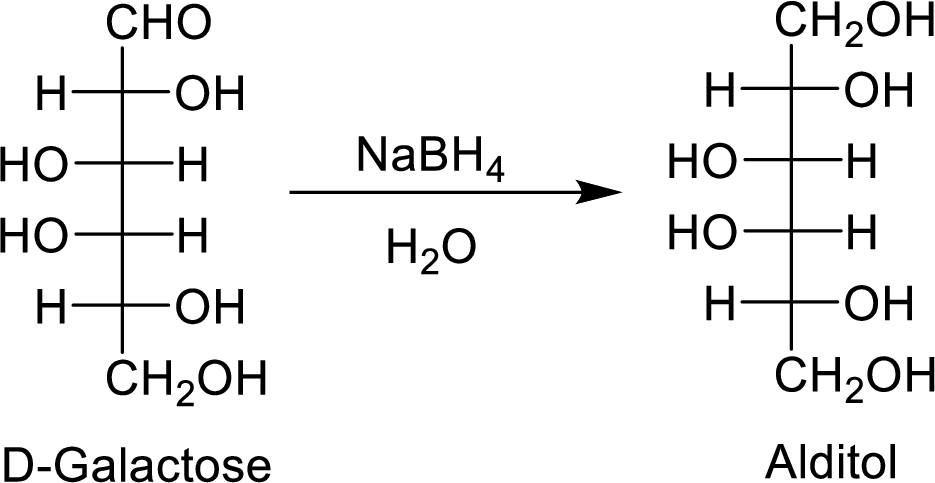
The formed alditol is optically inactive as it is a meso compound and shows plane of symmetry.
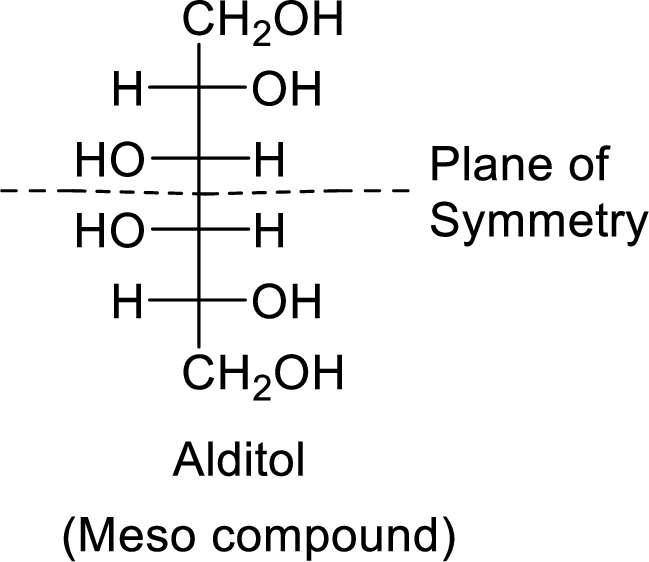
(b)
Interpretation:
The product formed by the reaction of D-galactose with
Concept Introduction:
The reagent
(b)
Explanation of Solution
When the D-galactose molecule is made to react with
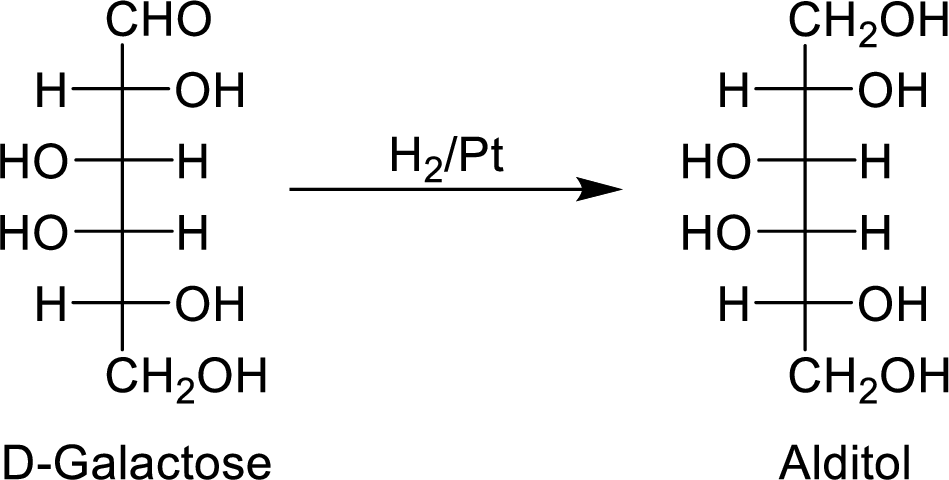
The formed alditol is optically inactive as it is a meso compound and it shows plane of symmetry.
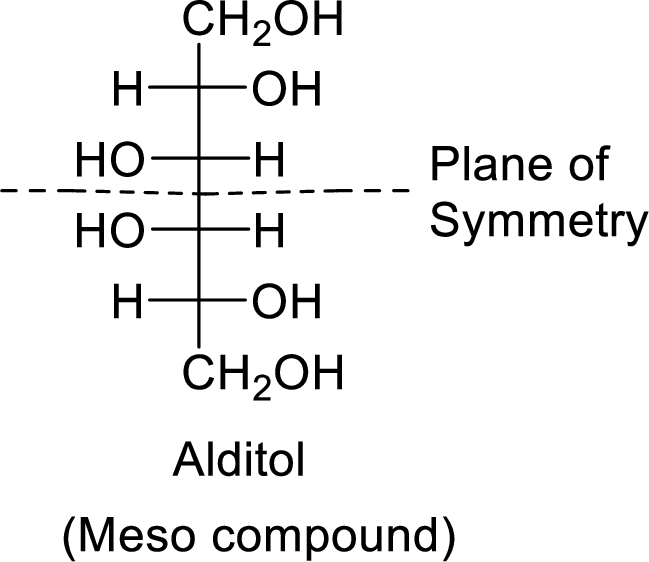
(c)
Interpretation:
The product formed by the reaction of D-galactose with warm
Concept Introduction:
The reaction of warm
(c)
Explanation of Solution
The nitric acid (
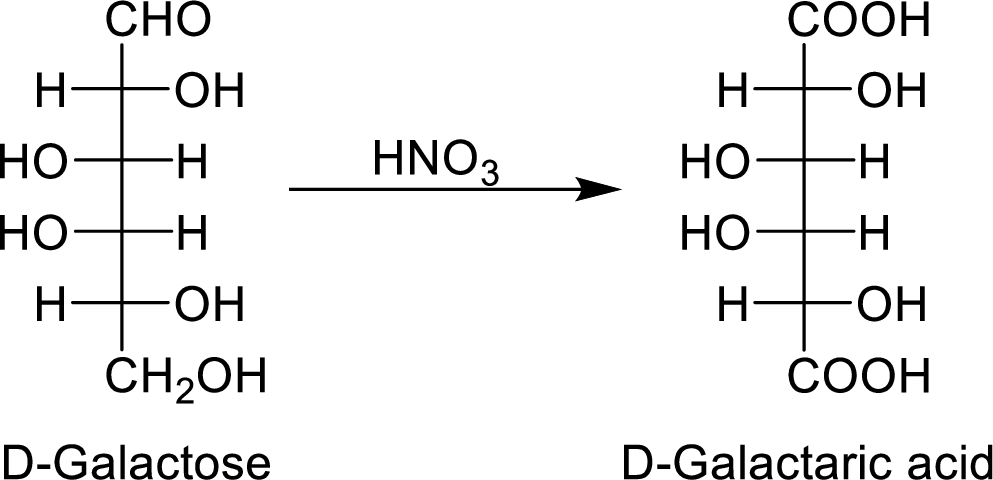
The product formed is a meso compound and shows plane of symmetry. So, it is optically inactive.
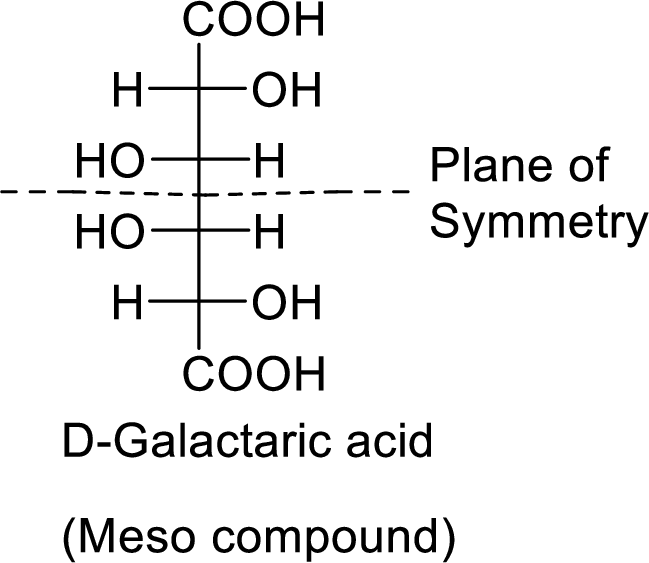
(d)
Interpretation:
The product formed by the reaction of D-galactose with
Concept Introduction:
The reaction of
(d)
Explanation of Solution
When the D-galactose reacts with
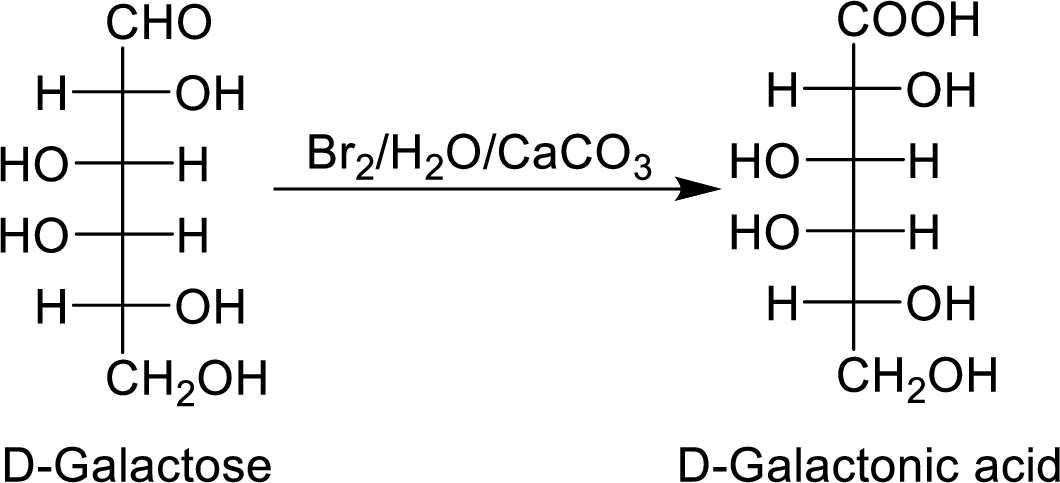
The formed product is optically active.
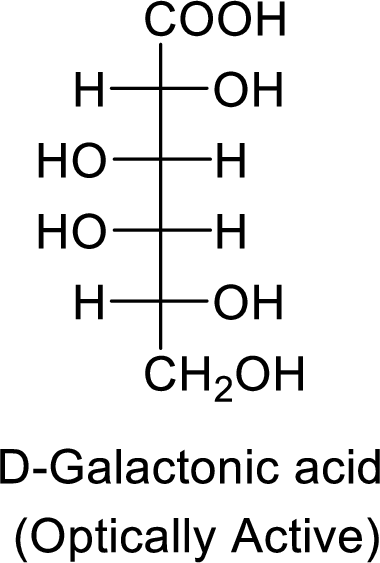
(e)
Interpretation:
The product formed by the reaction of D-galactose with
Concept Introduction:
The reaction of
(e)
Explanation of Solution
The D-galactose molecule consumes
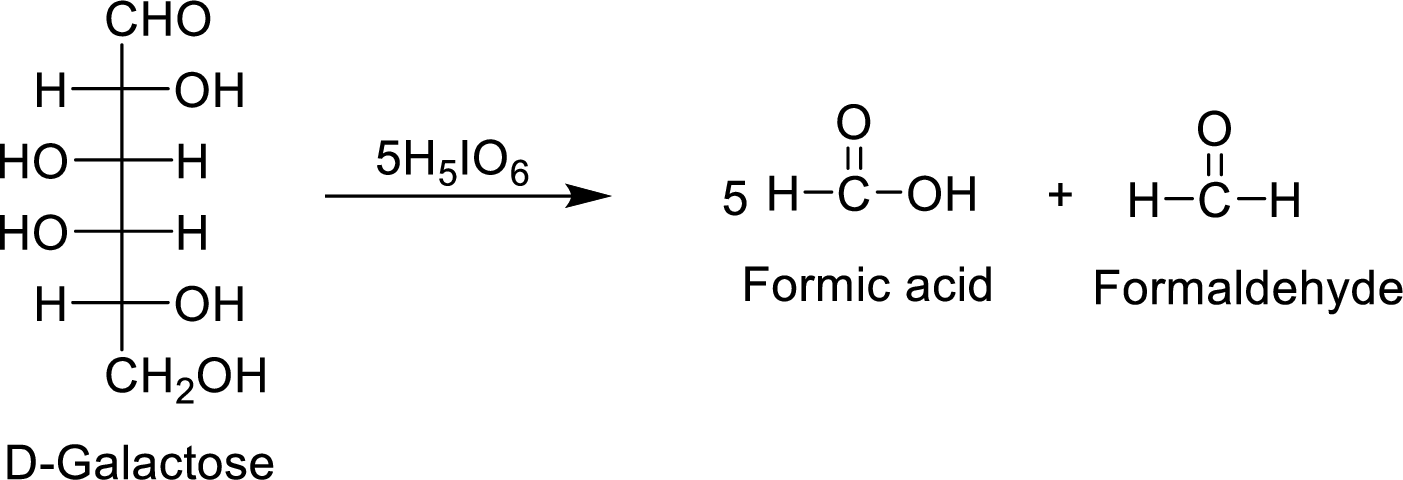
The products formed are achiral and are optically inactive.
(f)
Interpretation:
The product formed by the reaction of D-galactose with aniline (
(f)
Explanation of Solution
The D-galactose molecule reacts with aniline molecule and the aldehyde group of carbohydrate is reacted with the

The formed product is a chiral compound and optically active.
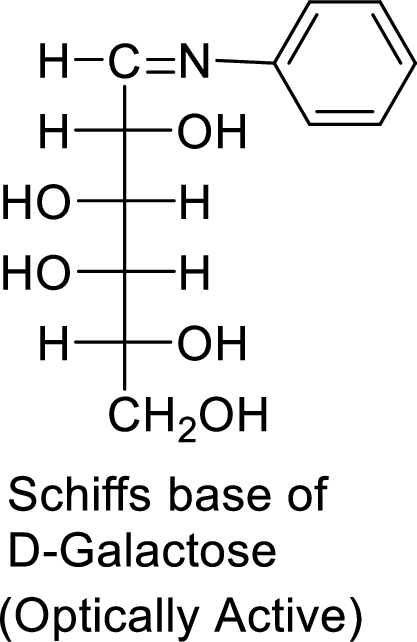
Want to see more full solutions like this?
Chapter 25 Solutions
Organic Chemistry, Loose-leaf Version
- How does the square root mean square velocity of gas molecules vary with temperature? Illustrate this relationship by plotting the square root mean square velocity of N2 molecules as a function of temperature from T=100 K to T=300 K.arrow_forwardDraw product B, indicating what type of reaction occurs. F3C CF3 NH2 Me O .N. + B OMearrow_forwardBenzimidazole E. State its formula. sState the differences in the formula with other benzimidazoles.arrow_forward
- Draw product A, indicating what type of reaction occurs. F3C CN CF3 K2CO3, DMSO, H₂O2 Aarrow_forward19) Which metal is most commonly used in galvanization to protect steel structures from oxidation? Lead a. b. Tin C. Nickel d. Zinc 20) The following molecule is an example of a: R₁ R2- -N-R3 a. Secondary amine b. Secondary amide c. Tertiary amine d. Tertiary amidearrow_forwardpls helparrow_forward
- pls helparrow_forward35) Complete the following equation by drawing the line the structure of the products that are formed. Please note that in some cases more than one product is possible. You must draw all possible products to recive full marks! a. ethanol + 2-propanol + H2SO4 → b. OH conc. H2SO4 CH2 H3C CH + K2Cr2O7 C. d. H3C A pressure CH3 + H2 CH Pt catalystarrow_forward21) The rate of reaction depends upon: a. the concentration and nature of reactants b. the temperature of the reaction C. whether or not a catalyst was used d. all of the above 22) A Maxwell-Boltzmann curve shows the distribution of molecular energies in a reaction system. When the temperature in this system is increased, the peak is a. higher and further to the right. b. higher and further to the left. c. lower and further to the right. d. lower and further to the left. 23) Which of the following correctly describes the reaction represented by the reaction below? CaCO3 (s) + energy → CaO (s) + CO2 (g) a. It is exothermic and the potential energy is greater in the reactants than the products. b. c. It is exothermic and the potential energy is greater in the products than the reactants. It is endothermic and the potential energy is greater in the products than the reactants. d. It is endothermic and the potential energy is equal for the products and reactants.arrow_forward
